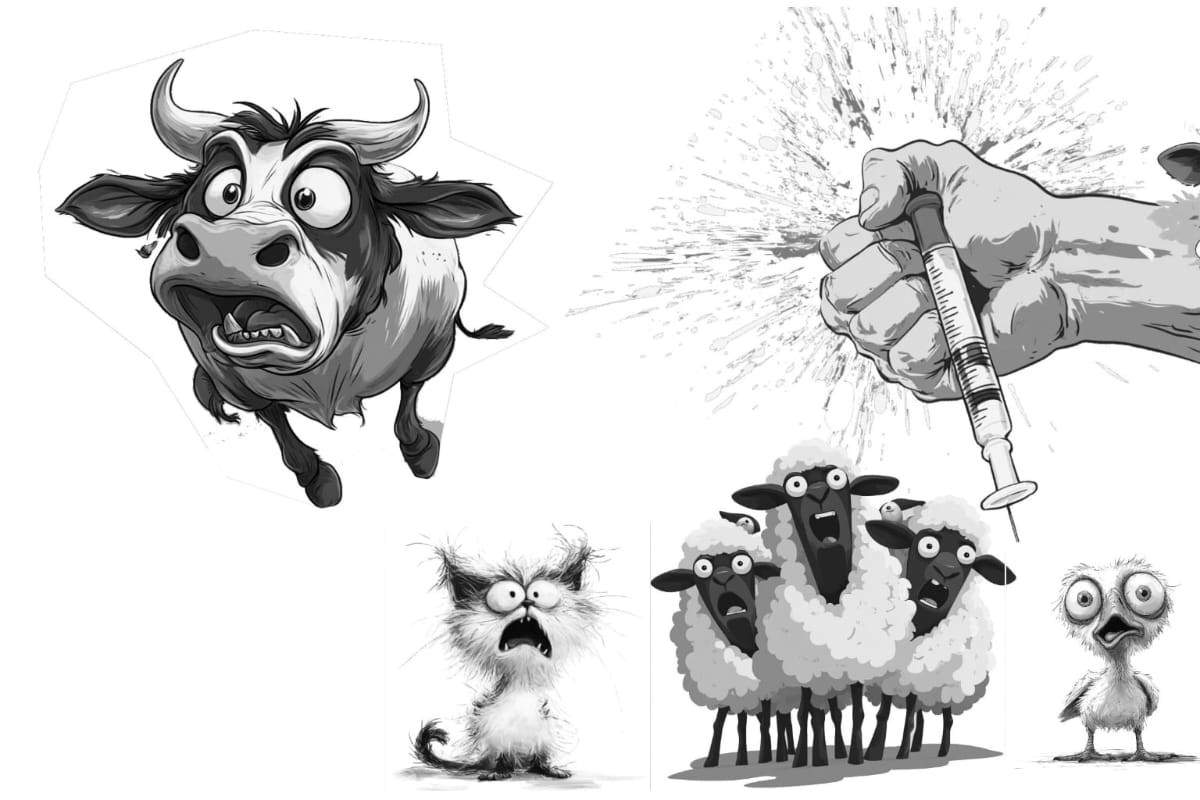
The systematic slaughter of cows due to lumpy skin disease (LDS) can be considered a scandal for a number of scientific, ethical, economic and health reasons.

By Jean-Marc Sabatier
Lumpy skin disease (LDS) of cattle is a viral disease caused by a Capripoxvirus, closely related to smallpox viruses (sheep and goat). The main transmission vectors are mosquitoes, horseflies and biting flies. To a lesser extent, viral transmission can occur via secretions and skin lesions. The viral incubation period is generally 4 to 14 days. The disease is characterized by the appearance of nodules and lesions on the skin (and mucous membranes), edema and weight loss. The virus is currently present in Africa, Asia (China, India, etc.), the Middle East and Eastern Europe. And now in France!
The systematic slaughter of cows due to lumpy skin disease can be considered a scandal for a number of scientific, ethical, economic and health reasons.
The following points should be borne in mind
Insufficient financial compensation
4- Mass culling is economically (and psychologically) disastrous, as it leads to the destruction of entire herds, often on the basis of one or two detected cases (sometimes even asymptomatic). The impact on breeders is major, with the loss of animals (potential destruction of herd genetics) and production, to which must be added the extreme trauma suffered by breeders. Financial compensation is often insufficient and/or delayed;
5- The culling strategy used is disproportionate to the actual health risk. A comparison of DNC with other more serious animal diseases such as rabies is exaggerated. WHO (World Organization for Animal Health) recommends control, but not mass slaughter of cattle.
Importing foreign meat
6-Economic or ideological interests may motivate this strategy of mass slaughter in France (currently in Savoie, Haute-Savoie, Ain and Isère). The systematic slaughter of animals can encourage the import of foreign or industrialized meat, to the detriment of local livestock farming. It may also be perceived by some as a strategy for the gradual elimination of traditional livestock farming, in the name of biosecurity, but in favor of centralized production systems under industrial or state control;
7- This is a real attack on living organisms and peasant ethics, as the elimination of healthy or curable animals is contrary to veterinary and peasant ethics. Animals are killed hastily, without any serious individualized clinical evaluation.
Thus, it appears that a systematic slaughter of cattle due to CND is scientifically unjustified, economically destructive, ethically unacceptable, and socially strange, even suspicious. It is a disproportionate response to a mostly benign disease, potentially paving the way for excessive control of animal production by technocratic or commercial logics. These measures are clearly out of touch with human and rural realities.
Treatment of nodular infectious dermatosis